Essential Oils for Flu: Best Remedies for Cold Season?
As a participant in the Amazon Services LLC Associates Program and other affiliate programs, Easy Homemade Life may collect a share of sales or other compensation from the links on this page. This comes at no additional cost to you, and all the prices and availability are accurate at the time of publishing.
Are you feeling under the weather? Don’t fret; essential oils for the flu may be the ticket for relief from the wintertime blues of a sore throat and runny nose.
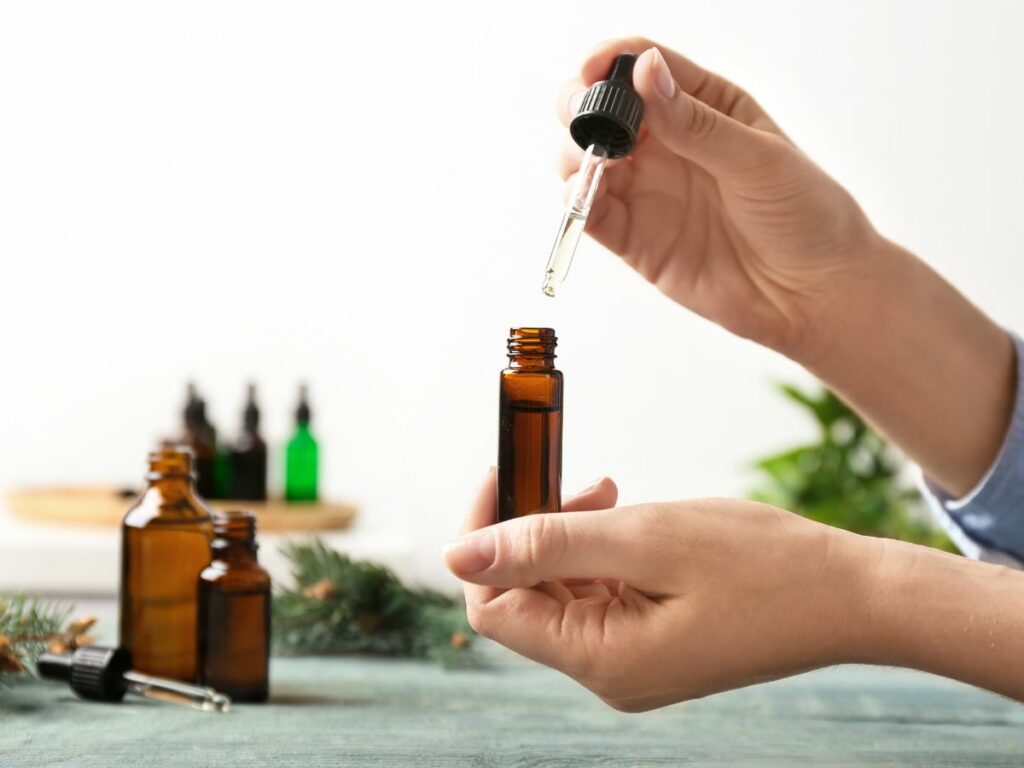
It’s a busy time of the year, and suddenly getting sick with body aches, a throbbing head, cough, and congestion isn’t in the plans. I’ve been there, and it’s frustrating, especially if you have a lot of activities lined up.
But don’t worry; these top-rated essential oils for flu season might provide some relief. Why not try some aromatic essential oil blends to see if they ease your flu symptoms and boost your immune system, so you can get back to feeling yourself again?
Why Use Essential Oils for a Flu?
It’s hard to feel under the weather when you have a lot of holiday activities. I don’t know if it’s the change of season or increase of stress, but I catch the flu every December. I concluded I’m not allergic to Christmas trees, which is a relief, but still it’s difficult to host parties and participate in events when I don’t feel up to it. Diffusing essential oils for flu or putting them in my essential oil diffuser necklace (which I always wear when I’m sick) has helped me feel better by creating a relaxed environment.
Essential oils aren’t only for setting ambiance and deodorizing your home. I use them to make my own antibacterial soap and to help treat nail fungus. You can also use essential oils for pain and inflammation, a common cold, and other flu-related symptoms.
While these may not completely heal your flu, they can help you feel better. Essential oils are best used under the care of a medical health professional, so check with your trusted healthcare provider and work together for the best results. This is especially important for pregnant women. Your provider may recommend specific oils that can make you feel more relaxed, ease tension, and clear your nasal passage. Certain oils may even help treat infections and lower fever by acting as antivirals.
The best way to explore the use of essential oils for flu is to approach with caution, considering potential side effects such as skin irritation. Always ensure safe storage and keep away from the reach of children.
This post may contain affiliate link(s). As an Amazon Associate, I earn from qualifying purchases. See Disclosures.
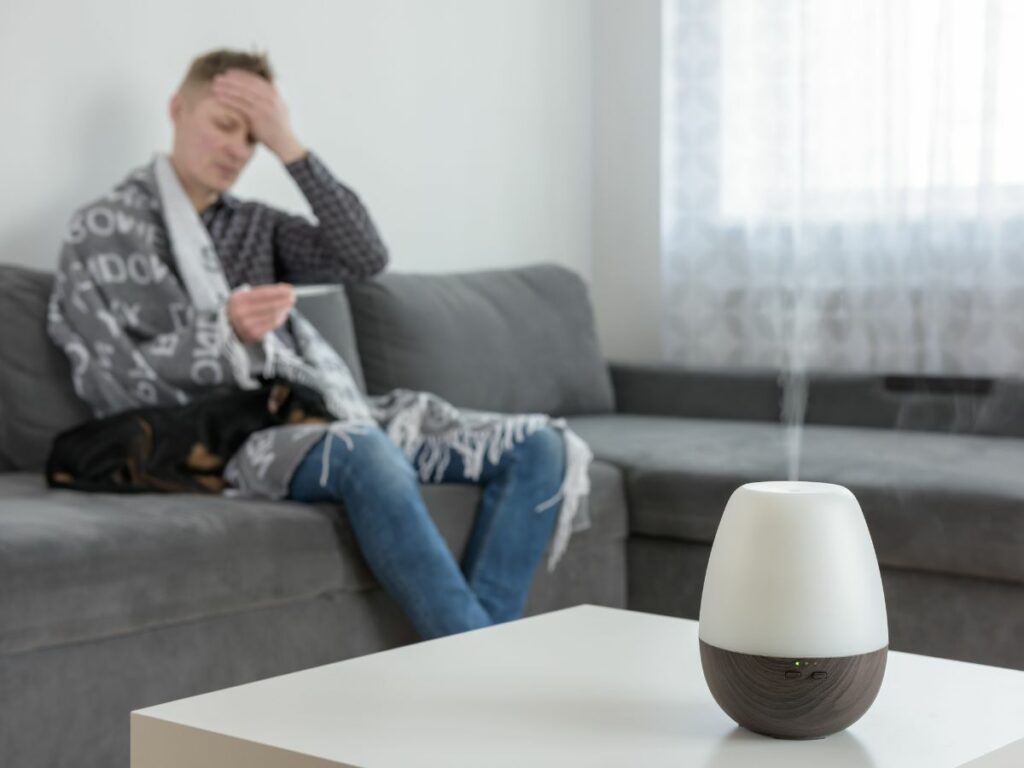
What are the Best Essential Oils for Flu?
There are countless essential oils out there, but only a few are the best essential oils for flu season. While the research cited below looks promising, it’s important to note there remains limited research on their efficacy and you should make your own health choices. If you’re suffering from the flu, you might want to consider these natural remedies to relieve your symptoms.
Lavender
Lavender essential oil has a soothing floral smell. Its delicate and pleasing aroma makes it widely appreciated unless you’re a mosquito, in which case lavender repels.
For me, I use it with my diffuser to make my home smell fresh all day. I also use it in homemade lavender sugar scrub and Epsom salt scrub because it adds a relaxing, soothing fragrance. But did you know that it’s not just used to add fragrance?
Lavender is one of the most well-known essential oils for its many uses. Aside from adding fragrance to your home, you can also use it to ease your flu symptoms.
For starters, this oil has anti-inflammatory properties. Thus, it’s a good idea when you have a headache and cough associated with the flu.
A 2022 study from Phytotherapy Research shows that it is also sedative. This means if you’re suffering from the flu and can’t sleep well, lavender oil might help you sleep better so you can have plenty of much needed rest.
Lemon
Lemon is another essential oil often used for cleaning pee stains and freshening up a room. Since it has a fresh and traditional lemon smell, it gives off an energizing and uplifting aroma that you can use to diffuse unpleasant odors like gasoline and cigarette smoke.
But lemon essential oil is also an excellent remedy for colds associated with the flu, thanks to lemon essential oil’s antiviral properties. A 2022 study indicates it may be a great disinfectant to protect against the flu. So, incorporating it into your flu treatment regimen may be a wise choice to prevent flu.
Lemon essential oil may also uplift your mood. One of the worst parts of being sick over the holidays is missing out on all the cheer. Everyone’s excited and happy around you, and there you are, not in the mood to celebrate because of the flu. This happens to me!
Peppermint
The flu often affects the nose, throat, and lungs. If you have flu with cough, sinusitis, and throat infections, peppermint essential oil might help.
Peppermint oil’s pleasant aroma alone can help you feel relaxed. Plus, as a classic winter essential oil, it can help get the Christmas vibe going. But did you know that it can also help you breathe better?
Peppermint oil can loosen up mucus and reduce inflammation in your sinus. If you’re having problems with breathing, this essential oil can help by relaxing your bronchial muscles.
This oil often works like a charm whenever I have sinus congestion. I usually add it to a diffuser, but it is also great for topical use, particularly on the chest area. Always dilute essential oils with a carrier oil before applying it to your skin to prevent irritation.
Eucalyptus
This is one of the popular woodsy essential oils. It’s undeniable, though, as it offers numerous benefits. One of them is its antimicrobial properties. This means it has the power to fight against cold, flu, and bacteria that can cause congested sinuses.
Aside from that, eucalyptus essential oil has antispasmodic, mucolytic, and expectorant properties. With this, you can calm a cough, clear blocked sinuses, and loosen the mucus that comes with the flu so you can breathe easier. It can also relieve fever.
Eucalyptus is also one of the best essential oils for flu body aches. Studies show it can act as a painkiller by increasing blood flow and reducing swelling.
Tea Tree Oil
By now, you’ve probably heard of tea tree oil. It’s famous for treating acne due to its antibacterial properties. Thus, you can find it in many antibacterial soaps, lotions, and other skincare products. But did you know that it can also help you with flu symptoms?
Tea tree is a potent essential oil that can help fight infections. But, it becomes even more powerful when mixed with eucalyptus. Aerosol Science and Technology published a 2012 conclusion that the combination can inactivate the influenza virus within five to ten minutes. That’s shocking to me and got my attention right away. This can be a viable complementary therapy, along with what my doctor advises.
Chamomile
Getting quality sleep is important, especially when you have the flu. But it’s easier said and done when you’re sick. I always find it difficult to sleep when I have flu because it’s often accompanied by stuffy noses, if not a cough also. Whenever this happens, I use chamomile oil to soothe my nerves before bedtime.
This essential oil is known to provide relief from the flu as it relaxes the body. Thus, it can promote sleep. This is also the reason why it’s recommended by researchers published in a 2021 Explore study for anxiety and stress, especially in the elderly.
Chamomile essential oil also has anti-inflammatory properties that help you relieve body aches. Take note, that there are two types of chamomile oil on the market: Roman chamomile and German chamomile, sometimes called Blue Chamomile. If you’re planning to buy one, go for the latter.
While both of them can provide relief from flu symptoms, German chamomile is considered to be more effective than the other. It has a higher concentration of chamazulene, the active ingredient in chamomile oil. However, it is also more expensive, so that’s something else to consider.
Bergamot
Bergamon also offers a calming effect like chamomile and lavender oils. In fact, one study shows that it helped boost positive emotions in a mental health treatment facility. So, if you’re stressed due to flu, this oil can help you feel better.
What’s more, bergamot oil also has antiviral properties. The American Journal of Essential Oils and Natural Products demonstrated in a 2014 study that bergamot oil and vapor can reduce the growth of the influenza virus within 10 minutes. The downside is that this doesn’t apply to viral load already in your body, but only on external surfaces or in the air. Thus, you can possibly prevent the spread of the flu in your household.
How to Use Essential Oils against the Flu?
With flu season in full swing, finding different ways to alleviate cold symptoms is important so you can get back to feeling your best. One natural way to do this is by using the essential oils reviewed above, but how?
All oils shouldn’t be treated the same. Some work better when applied topically, while others are best used for inhalation, bathing, and more. If your doctor approves, here are ways you can use them to feel better.
Steam Inhalation
Inhalation is my favorite way to get the benefits of essential oils when I’m sick because it’s the fastest way the molecules can enter the body, and the therapy is concentrated on the problem areas of sinus passages, throat, and head. For a quick and short burst, you may sniff the oil directly from the bottle.
Take precaution that pure oil never comes into contact with the tip of your nose, eyes or skin. Specifically, peppermint, for instance, may irritate the skin and eyes.
Add a few drops of essential oils directly into a pot of hot water for steam inhalations. Eucalyptus is one of the best essential oils for this, especially if you’re trying to clear a stuffy nose. Here’s how you can use it:
- Add ten to 15 drops of eucalyptus oil to a medium pot or bowl of hot water.
- Place a towel over your head and drape it around the vessel, trapping the steam in close proximity.
- Take slow deep breaths and breathe the steam for about ten minutes. Then stop and repeat as needed.
You can also mix eucalyptus oil and peppermint oil. Here’s how:
- Add 10 drops of eucalyptus oil and 5 drops of peppermint oil.
- Place a towel over your head and continue on as directed above.
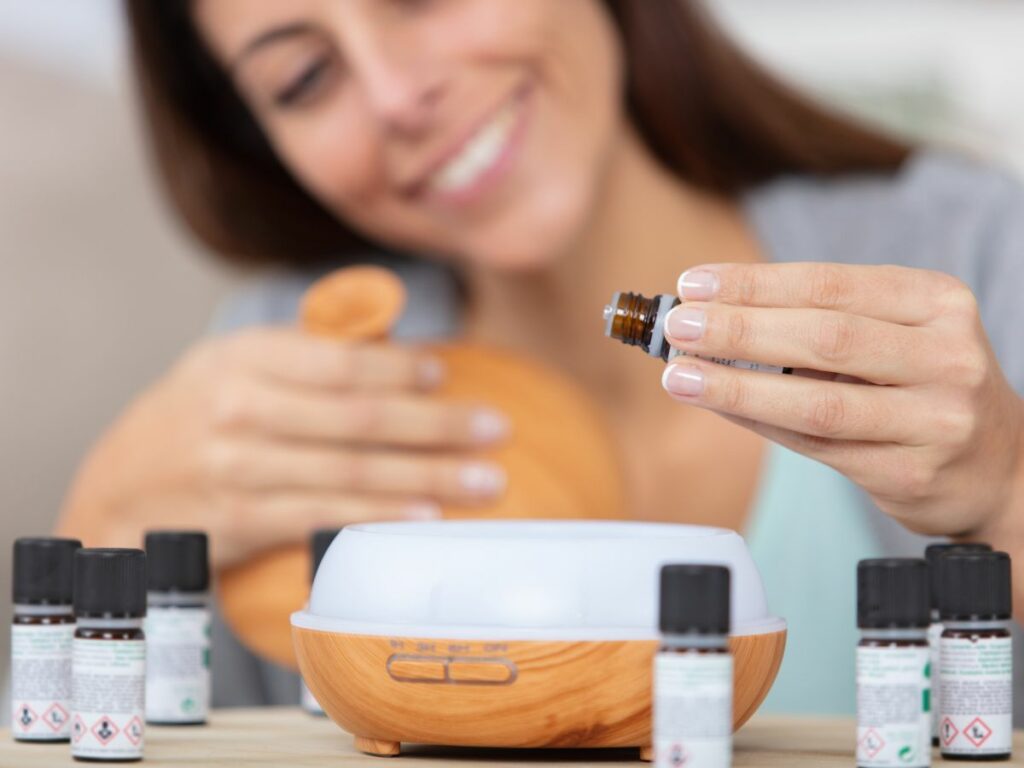
Diffusion
Diffusing your room or home with essential oils does more than fill the air with the smell of sugar cookies; it can also help clear your sinuses. Aside from that, as the previous references indicate, doing so can reduce the airborne viruses in your space.
Tea tree oil is one of the best essential oils for this. To use tea tree oil properly, add 3 drops of it to your diffuser per 100 ml of water. Don’t be too enthusiastic about adding drops, because it might be too overwhelming if it’s your first time using a diffuser. Go slow and steady. You may increase it to your liking by up to 5 drops per 100ml of water.
Aside from tea tree oil, you can also use bergamot or other oil. Feel free to test ginger diffuser blends or other combinations that excite you.
Bathing
Adding essential oils to your bath may also be beneficial for flu. Hot baths, maybe even a relaxing bubble bath, can relieve sore muscles and make you feel more relaxed, which is important when you have the flu. Lavender, eucalyptus, and lemon oils are three popular oils for bathing.
For bathing, use 5 to 20 drops of oils combined in a tablespoon of carrier oil before adding to the water. I combine 5 drops of lavender, 5 drops of eucalyptus, and 5 drops of lemon oil in olive oil, and then pour the oil in the water, mixing with my hand a little before getting in to soak.
You can also mix lavender and chamomile oils. Simply mix 5 drops of lavender, 5 drops of chamomile oil, and one tablespoon of carrier oil into your hot bath.
Avoid a bath infusion if you have scratches or broken skin, the essential oil may irritate these areas more. Resist the urge until the skin has healed.
Also, if you know you have sensitive skin, do a patch test by applying the diluted oil directly to a small place on your forearm to test for allergic reactions first. Wait for 24 hours to see if any reactions occur.
Compress
Do you feel body aches when you have the flu? Aren’t they the worst? Don’t worry; essential oils have your back. Add these potent plant extracts to a hot or cold compress for quick relief!
Here’s how you can do it to relieve inflammation:
- Fill a bowl with 1 quart of cold water.
- Add 4 to 5 drops of essential oil. For this method, I find chamomile and eucalyptus effective.
- Submerge your towel until it’s completely wet.
- Lightly wring out the excess water and fold the towel into a rectangle or other shape that covers the area.
- Apply to the affected area and leave for about 15 minutes.
If you need to relieve pain, here’s what you can do:
- Fill a bowl with 1 quart of hot water.
- Add 4 to 5 drops of chamomile or eucalyptus oil.
- Submerge a cloth or towel and let it absorb the oil.
- Lightly wring out the excess water and fold the towel into a rectangle or other shape that covers the area.
- Apply to the affected area for about 15 minutes.
Massage
I don’t know many people who would turn down a massage, especially when they suffer from nasal congestion or body pain. Gently rubbing essential oil-infused massage oil might be what you need to clear nasal passages and ease body tension.
Base Formula recommends adults use 1 to 2 drops of eucalyptus or chamomile essential oil for every 5 milliliters of carrier oil. I suggest using sweet almond, grapeseed, jojoba, or coconut oil as your carrier oil. Then, gently massage into the affected area.
Ratios for babies and children vary by age. For babies over 3 months old, use 1 drop of essential oil in 15 milliliters of carrier oil. You can use 2 drops for kids aged 1 to 5-years-old; for 6 to 12-year-olds, you can use 3 drops.
In Conclusion
With all the business of daily life, it can be hard to keep up and enjoy during the flu season. Under adequate professional guidance, essential oils for the flu can be a great complementary approach to treating symptoms of the flu.
With these oils, you can experience many benefits and support your body’s healing process. So, the next time you’re feeling under the weather, why not try essential oils and see what they do for you?
Save this guide where you can quickly find it. Next time you have a flu, you know what to do. Also, don’t forget to share this with your loved ones when they get sick. This might help them feel better, too.


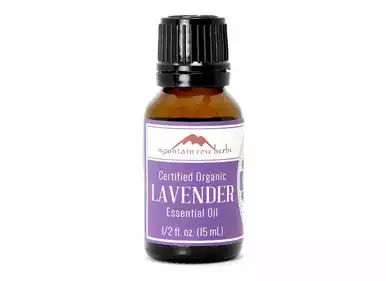
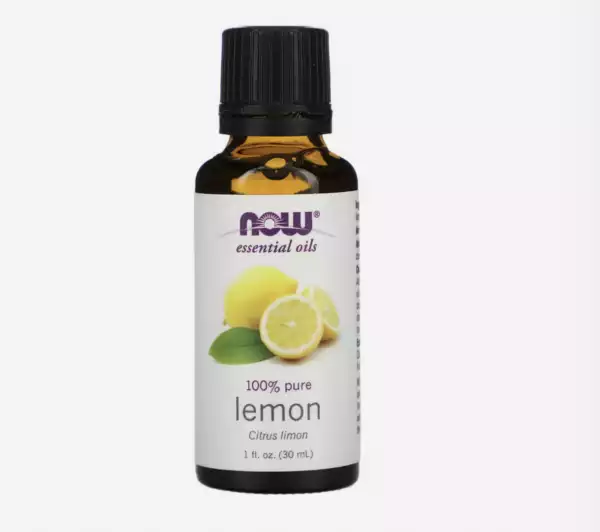
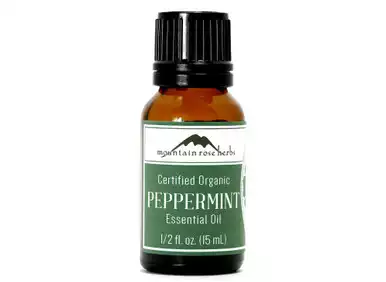
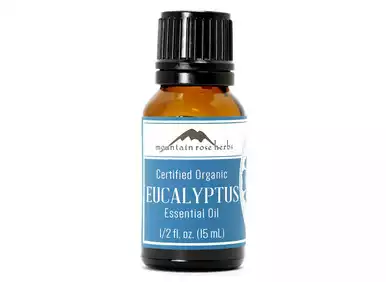
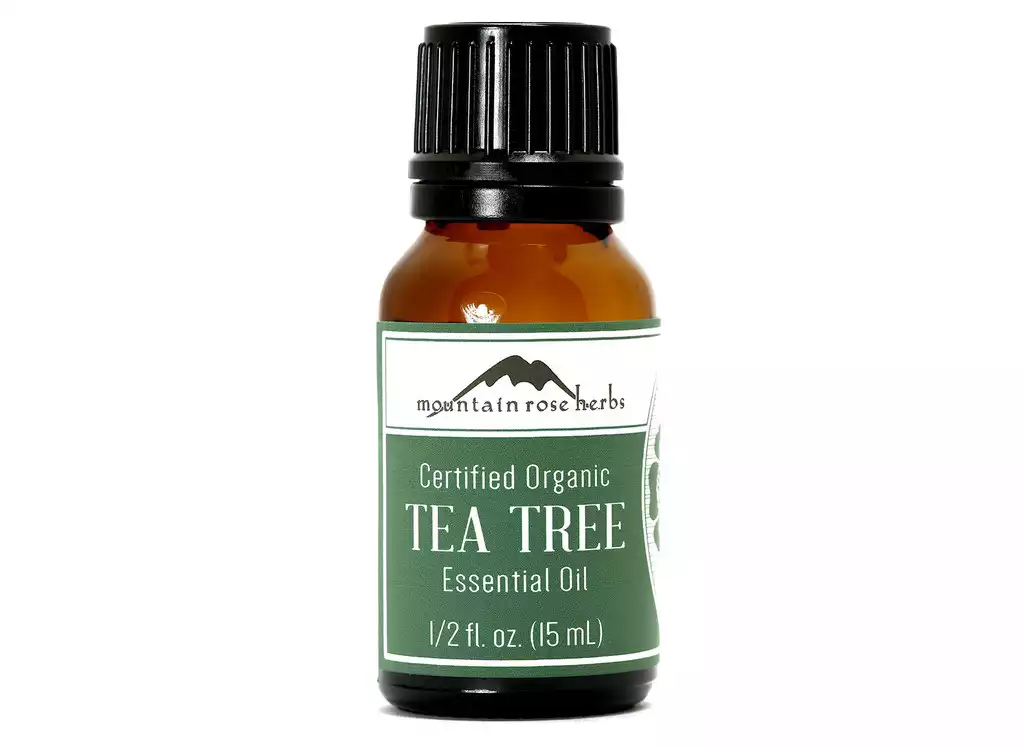
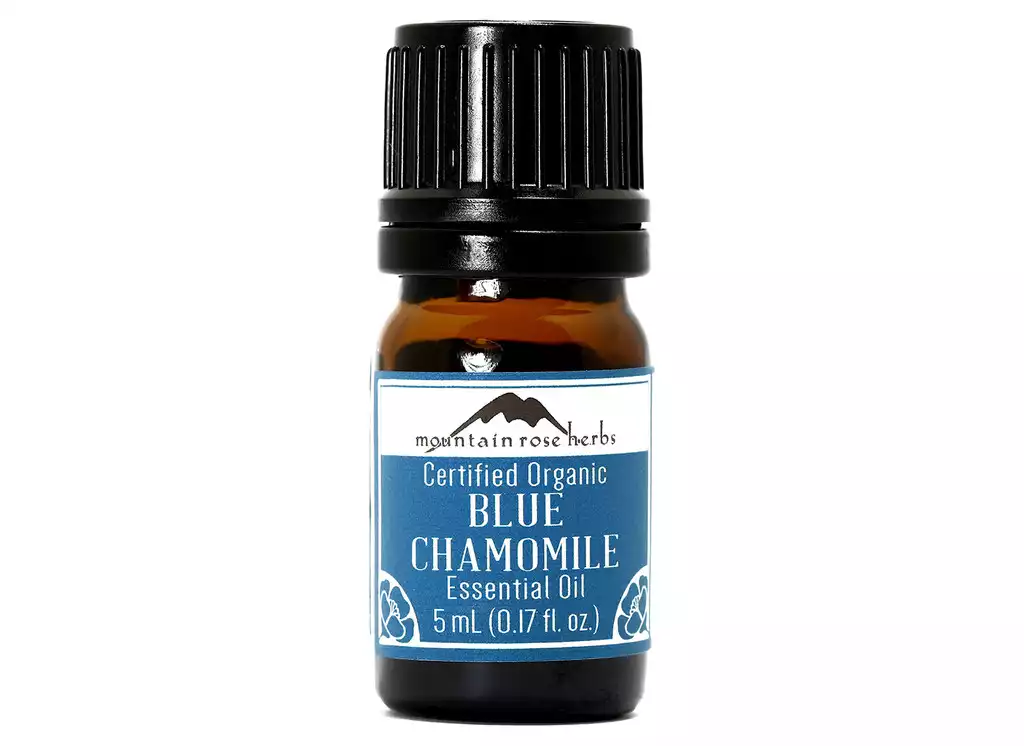
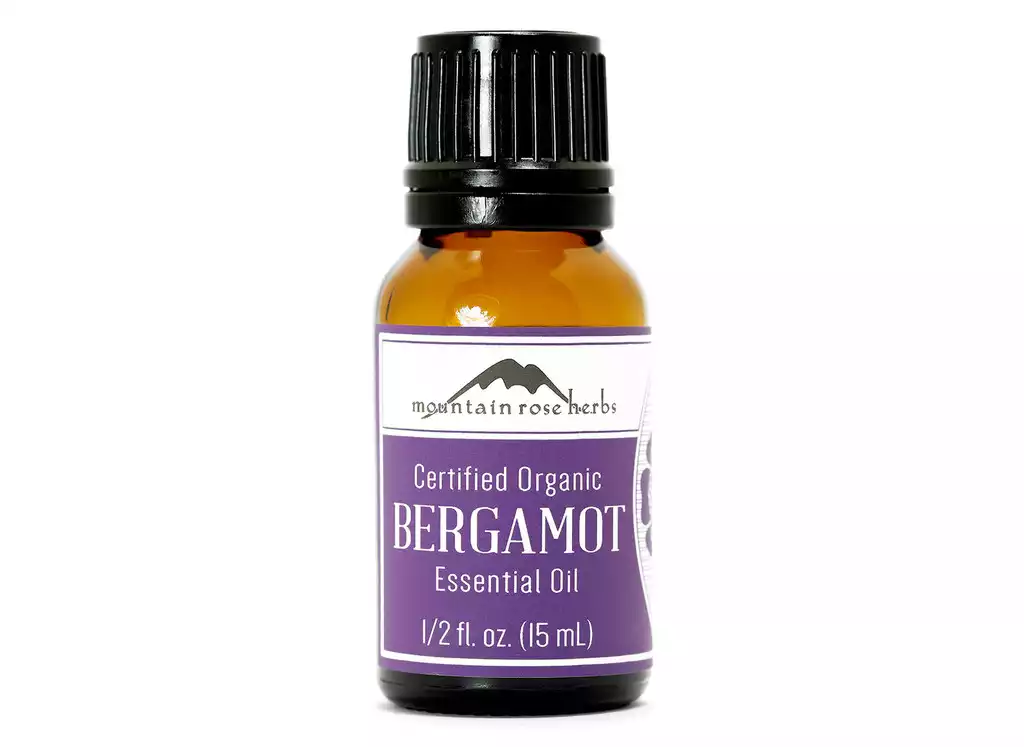
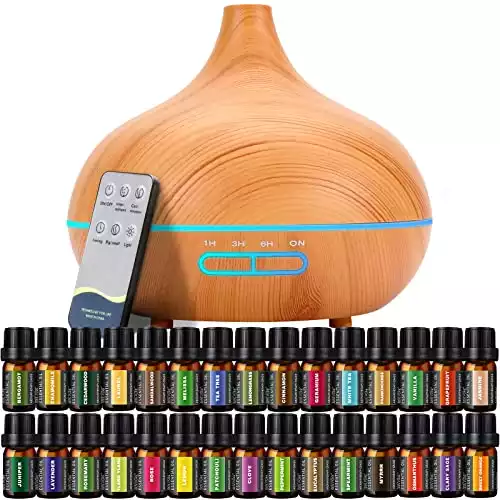
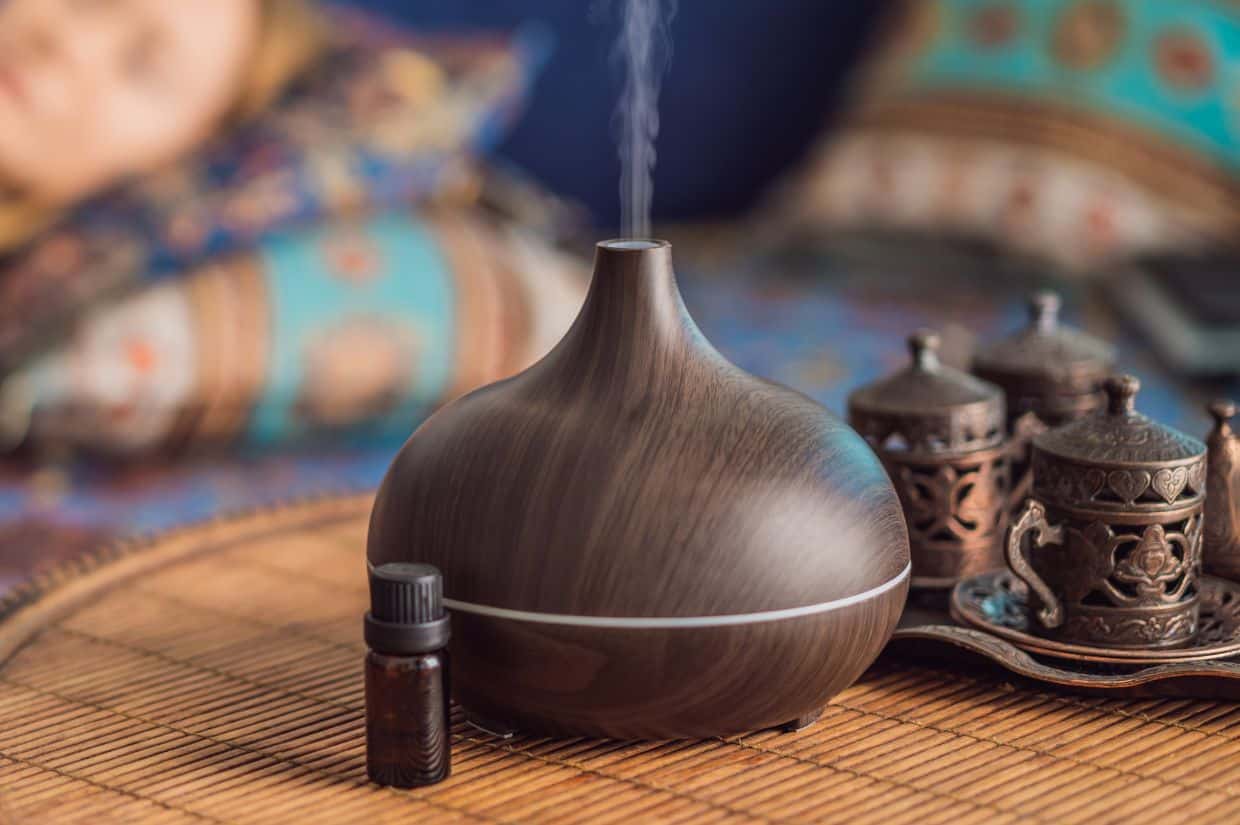

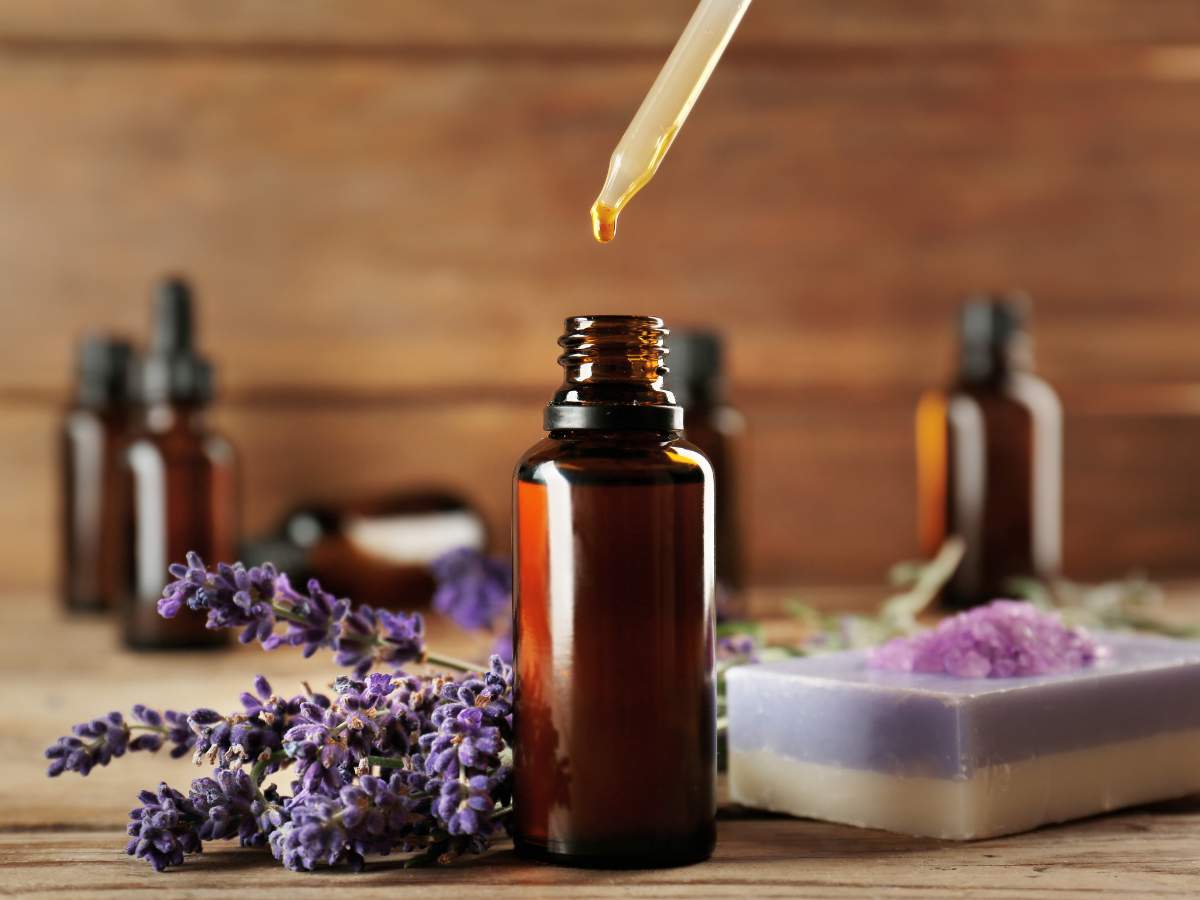


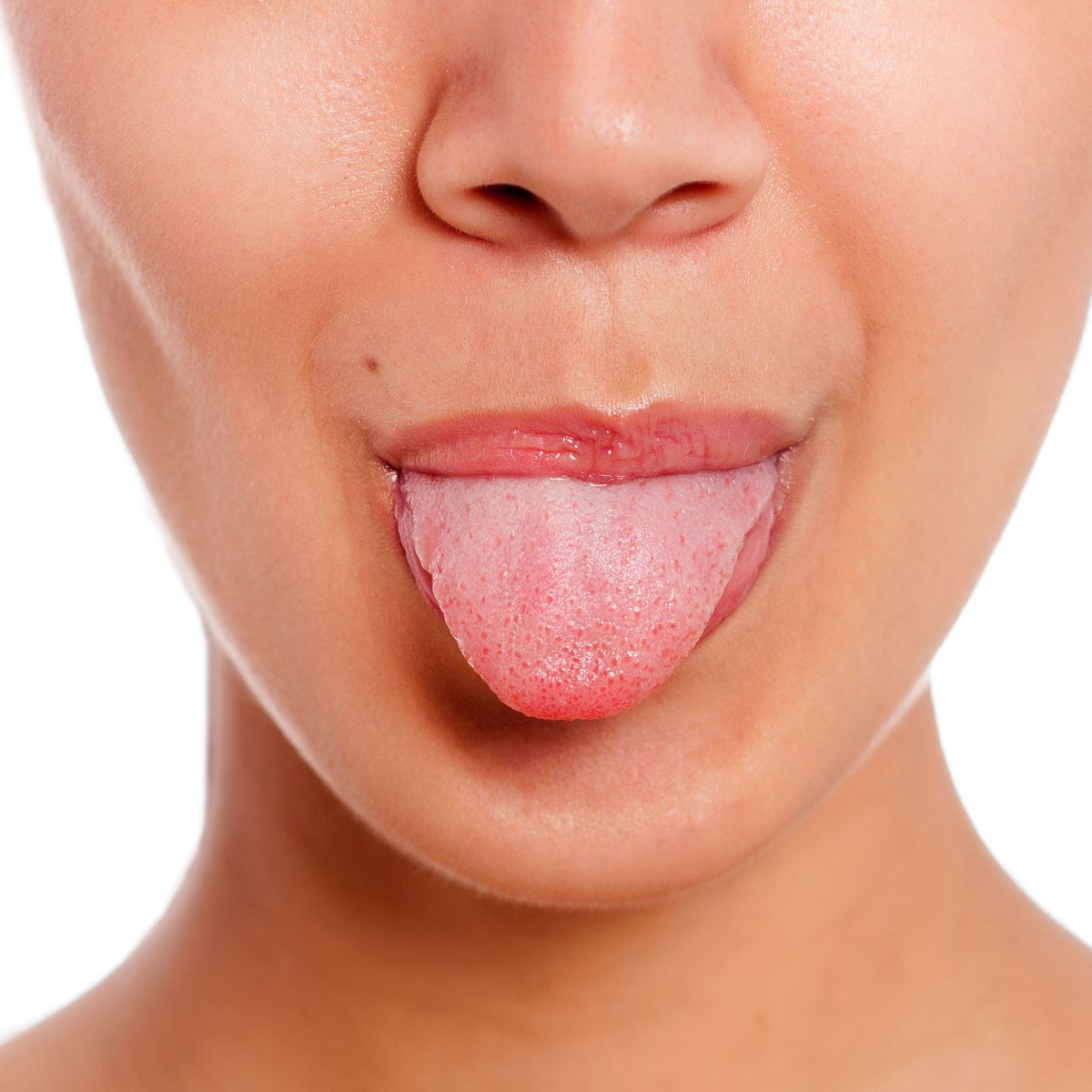
The massage method always works wonders for my flu…even on my feet. Good info here, thanks!
You’re very welcome, Fran.